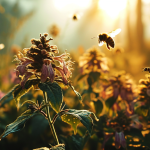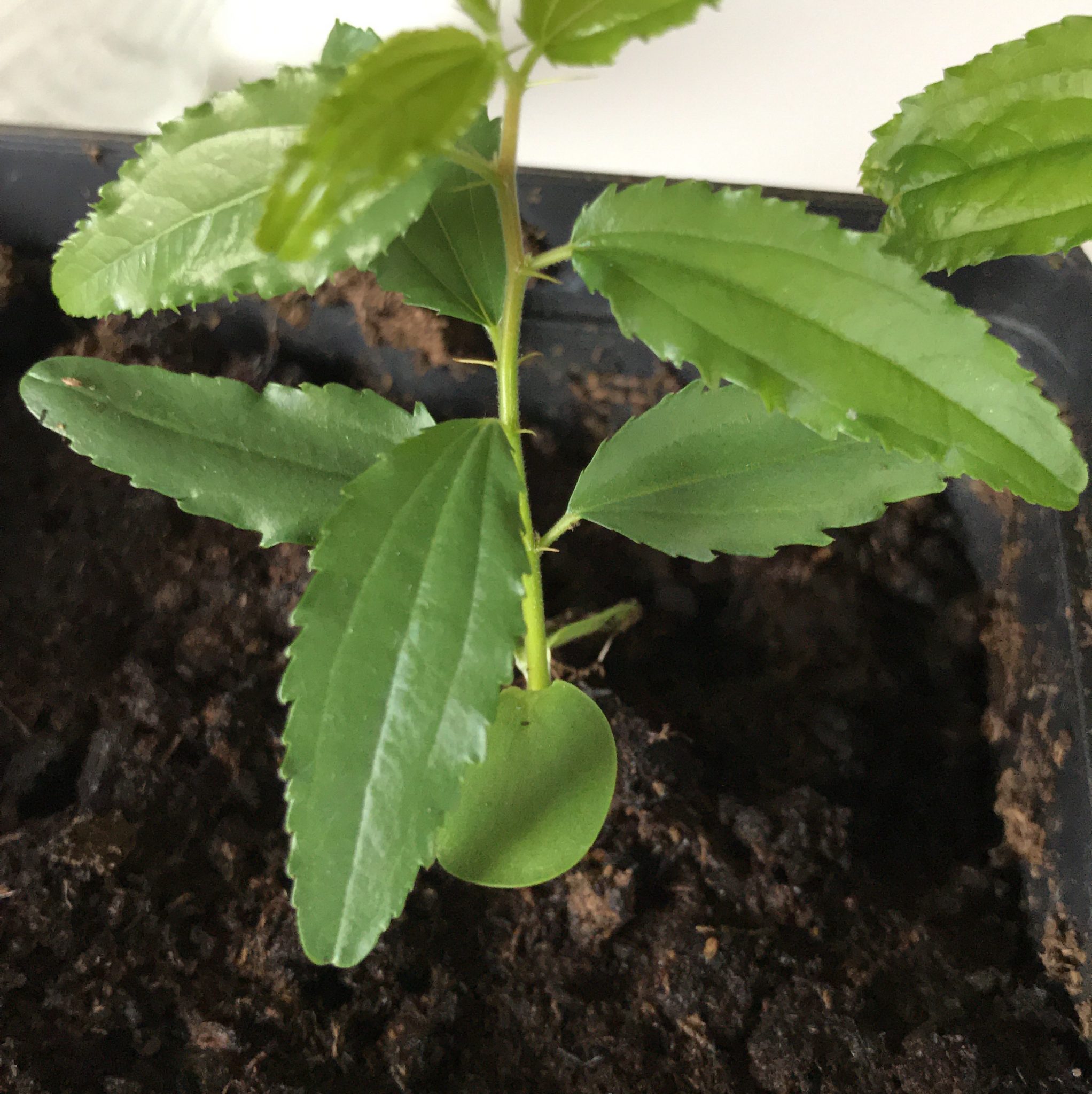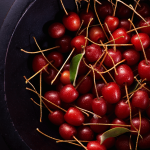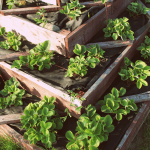Bocking 14 Comfrey: Champion of Sustainable Gardens
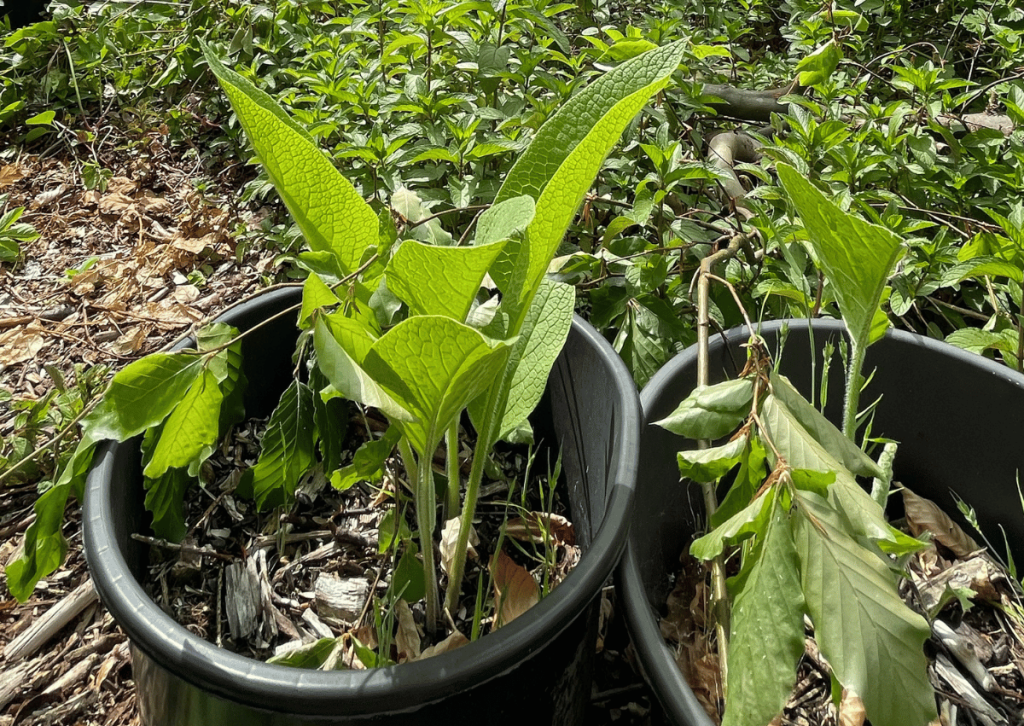
Comfrey (Symphytum officinale) has long been a staple in gardens, valued for its versatility in traditional medicine and organic gardening. This perennial herb, known for its deep roots and broad, fuzzy leaves, has numerous variants, among which Bocking 14 Comfrey is particularly notable. Developed in the 1950s by Lawrence D. Hills, founder of the Henry Doubleday Research Association, Bocking 14 emerged from the Bocking trials in Essex as a sterile cultivar, distinguished by its inability to produce seeds and thus preventing uncontrolled spread. This characteristic makes it a preferred choice for permaculturists who value both productivity and environmental stewardship.
In this article, we delve into the world of Bocking 14 Comfrey, exploring its origins, unique features, and why it wins the hearts of gardeners. We will compare it with other variants like Bocking 4, provide tips on identification, and discuss its adaptability to diverse climates, including USDA Zone 7 and Scandinavian regions. Our journey will also cover the practical aspects of cultivation, the myriad uses of this ‘green gold,’ and address important health and safety considerations, including its legal status and safety for consumption. Join us as we uncover the multifaceted roles of Bocking 14 Comfrey in fostering fertile, sustainable gardens and its embodiment of permaculture principles.
The Genesis of Bocking 14 Comfrey
The Historical Background of Bocking 14 Comfrey
The journey of Bocking 14 Comfrey traces back to the innovative efforts of Lawrence D. Hills, the founder of the Henry Doubleday Research Association and a prominent figure in organic gardening. In the 1950s, Hills initiated the Bocking trials in Essex, England, aiming to develop a comfrey variant that was both agriculturally advantageous and environmentally considerate.
Development of the Sterile Cultivar
Among the various cultivars produced during these trials, Bocking 14 stood out for its unique characteristic: sterility. Unlike traditional comfrey, which reproduces through seeds and can spread aggressively, Bocking 14 is incapable of seed production. This sterility was a significant advancement in comfrey cultivation, addressing the common concern of uncontrolled spread associated with the plant.
The Significance of Sterility in Bocking 14
The inability of Bocking 14 Comfrey to produce seeds has multiple implications. Primarily, it allows gardeners and permaculturists to cultivate the plant without the risk of it invading beyond intended areas. This aspect is particularly vital in permaculture, where maintaining ecological balance is key. Additionally, the energy of the plant, which might otherwise go into seed production, is redirected towards the growth of its leaves and roots, enhancing its utility as a biomass source for composting and mulching.
Differentiating Bocking 14 from True Comfrey
Bocking 14 Comfrey, while a cultivar of the true comfrey (Symphytum officinale), is distinct in its reproductive behavior. True comfrey propagates through seeds, often leading to widespread growth. Bocking 14, on the other hand, can only be propagated through root division, a feature that ensures controlled growth and prevents unintended spread to other garden areas.
Bocking 14’s Role in Controlled Cultivation
The development of Bocking 14 Comfrey represents a significant stride in the realm of sustainable agriculture. By offering a solution that combines robust growth with controlled cultivation, it has become a preferred choice for gardeners and permaculturists who are mindful of their environmental impact and seek effective, sustainable gardening practices.
Bocking 14 vs. Bocking 4 Comfrey – Insights from Lawrence D. Hills
Insights from ‘Comfrey Past and Present’ by Lawrence D. Hills
At the outset of our comparison between Bocking 14 and Bocking 4 Comfrey, it is essential to draw upon the authoritative work of Lawrence D. Hills, the world-renowned expert on Comfrey. In his seminal book, “Comfrey Past and Present,” Hills provides an exhaustive account of the development and characteristics of various comfrey strains, including the Bocking cultivars. His research, particularly on the ‘Bocking 14’ cultivar of Russian comfrey, offers invaluable insights into the cultivation and application of these plants in different climates and settings.
Bocking 14: The Sterile Powerhouse
Bocking 14, as detailed by Hills, is a sterile cultivar, developed to prevent the plant from self-seeding and becoming invasive. This sterility is its most significant advantage, making it a preferred choice for gardeners who seek high biomass production for green manure, composting, and mulching. The leaves of Bocking 14 are rich in nitrogen, potassium, and phosphorus, making them highly beneficial for soil enrichment.
Bocking 4: The Fodder Favorite
Similarly, Bocking 4, also a sterile cultivar, is known for its rapid leaf production. Hills notes its suitability for animal fodder due to its quick growth and slightly less coarse leaves compared to Bocking 14. Like its counterpart, Bocking 4 has deep taproots that are effective in extracting minerals from the soil, enriching its leaves with nutrients.
Comparative Growth and Usage
While both Bocking 14 and Bocking 4 are sterile and excellent for soil improvement, their usage varies based on specific gardening goals. Bocking 14 is ideal for composting and mulching, thanks to its nutrient-rich foliage. In contrast, Bocking 4 is often chosen for animal feed due to its faster leaf production and palatability.
Choosing the Right Cultivar for Your Garden
Drawing from Hills’ extensive research, gardeners can make informed decisions about which Bocking cultivar to choose. Both Bocking 14 and Bocking 4 align with sustainable and organic gardening practices, offering different benefits depending on the intended use.
The Role of Bocking Cultivars in Sustainable Gardening
The development of these Bocking cultivars, as chronicled by Hills, underscores their importance in sustainable gardening. Their sterility makes them environmentally friendly choices, preventing the issues of invasiveness associated with other comfrey varieties and contributing significantly to responsible gardening practices.
Identifying Bocking 14
Key Characteristics for Identification
Identifying Bocking 14 Comfrey in your garden or when selecting plants is crucial to ensure you are cultivating the desired variant. Bocking 14 has distinct features that set it apart from other comfrey types, including Bocking 4 and true comfrey.
Leaf Structure and Appearance
Bocking 14 Comfrey’s leaves are one of its most distinguishing features. They are broad and lance-shaped, with a slightly rough texture. The leaves are typically larger and more robust compared to other comfrey varieties. Their deep green color is another characteristic that helps in identification.
Growth Pattern and Height
This cultivar exhibits a bushy growth pattern, typically reaching a height of about 1 to 1.5 meters (3 to 5 feet). The plant forms a clump with leaves growing densely around a central stem. Unlike some other comfrey types, Bocking 14 does not spread widely due to its sterility, so its growth is more contained and upright.
Flower Characteristics
While Bocking 14 Comfrey does produce flowers, they are sterile and do not result in viable seeds. The flowers are usually bell-shaped, small, and can range in color from creamy yellow to purple. The flowering period can also aid in identification, as Bocking 14 tends to bloom from late spring to early summer.
Root System
The roots of Bocking 14 Comfrey are another identifying feature. They are thick, fleshy, and deep, often extending several feet into the soil. This deep root system is what allows the plant to access and bring up nutrients from deeper soil layers, making it valuable for soil enrichment.
Practical Tips for Identification
- Visual Inspection: Regularly observe the leaf shape, size, and texture.
- Growth Monitoring: Note the height and spread of the plant over time.
- Flower Observation: Pay attention to the color and shape of the flowers and their blooming period.
Why Correct Identification Matters
Proper identification of Bocking 14 Comfrey is essential for gardeners who want to harness its specific benefits without the risk of it becoming invasive. It ensures that you are utilizing a plant that aligns with sustainable gardening practices and meets your specific gardening goals, whether it’s for composting, mulching, or green manure.
Cultivation and Growth of Bocking 14 Comfrey
Optimal Growing Conditions
To successfully cultivate Bocking 14 Comfrey, understanding its preferred growing conditions is key. This cultivar thrives in well-drained soil with a neutral to slightly acidic pH. It prefers a sunny to partially shaded location, although it is quite adaptable and can tolerate a range of light conditions.
Planting and Propagation
Bocking 14 Comfrey is propagated through root division, as it does not produce viable seeds. Spring is the ideal time for planting. To propagate, divide the roots into sections, ensuring each piece has at least one bud. Plant these root cuttings about 2 to 3 inches deep and space them approximately 2 feet apart to allow ample room for growth.
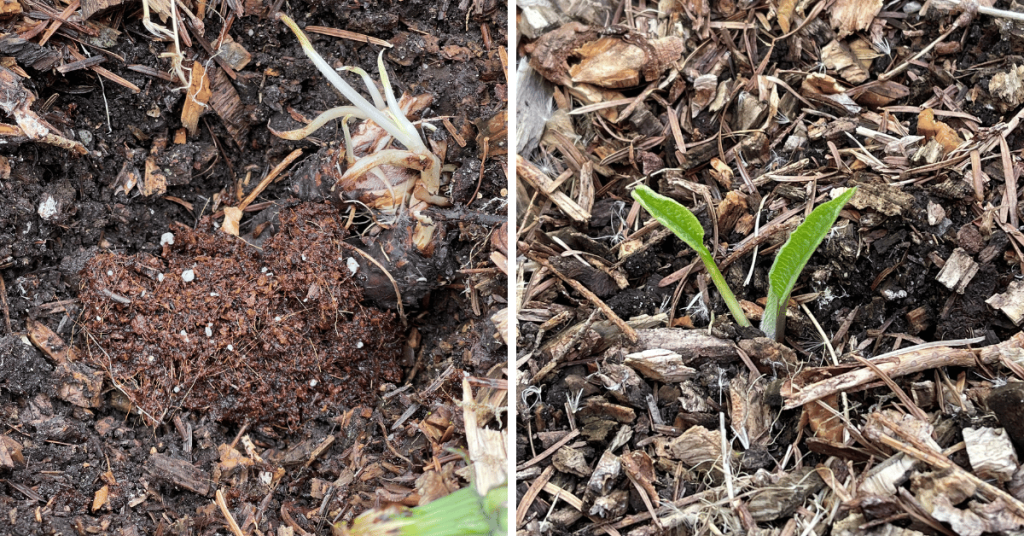
Watering and Feeding
While Bocking 14 is drought-tolerant once established, regular watering during the first growing season helps establish a strong root system. It does not require frequent fertilization; a balanced, organic fertilizer applied in the spring can suffice for the entire growing season.
Managing Growth and Size
How Big Does Comfrey Bocking 14 Grow?
Bocking 14 Comfrey typically reaches a height of 1 to 1.5 meters (3 to 5 feet) and forms a clump about the same width. To manage its size and encourage new leaf growth, you can cut back the plant to a few inches above the ground. This can be done several times during the growing season, as Bocking 14 is a vigorous grower and will quickly regenerate.
Harvesting Leaves
The leaves of Bocking 14 Comfrey can be harvested several times throughout the growing season. Use a sharp knife or scissors to cut the leaves, leaving the central crown and a few inches of growth to ensure quick regeneration.
Winter Care
In colder climates, Bocking 14 Comfrey will die back in the winter. However, its roots remain alive underground. In spring, the plant will regrow from these roots. To protect the plant in winter, you can mulch around the base with organic material.
Common Pests and Diseases
Bocking 14 Comfrey is relatively resistant to pests and diseases. However, it can occasionally suffer from comfrey rust, a fungal disease. To prevent this, ensure good air circulation around the plants and avoid overhead watering.
Maintaining Healthy Plants
Regular monitoring and basic care are sufficient to maintain healthy Bocking 14 Comfrey plants. By understanding its growth habits and requirements, gardeners can ensure that this valuable plant continues to thrive and contribute to their garden’s ecosystem year after year.
Uses and Applications of Bocking 14 Comfrey
A Versatile Plant for Various Applications
Bocking 14 Comfrey is not just celebrated for its ease of cultivation but also for its wide range of uses in gardens, farms, and sustainable living spaces. Understanding how to utilize this plant can significantly enhance your gardening and agricultural practices.
- 1. Green Manure and Soil Improvement
- One of the primary uses of Bocking 14 Comfrey is as green manure. Its deep roots mine nutrients from the soil, which are then stored in the leaves. When these leaves decompose, they release these nutrients back into the soil, enriching it. Gardeners often chop and drop the leaves directly onto the soil as a mulch, which gradually breaks down and improves soil fertility.
- 2. Composting Accelerator
- The high nitrogen content in Bocking 14 Comfrey leaves makes them an excellent compost accelerator. Adding chopped leaves to your compost pile can speed up the decomposition process, resulting in rich, nutritious compost for your garden.
- 3. Natural Fertilizer – Comfrey Tea
- Comfrey tea is a popular natural fertilizer, made by steeping the leaves in water. This nutrient-rich tea can be used to water plants, providing them with essential nutrients for growth. It’s especially beneficial for plants that require high levels of potassium.
- 4. Livestock Fodder
- Although primarily used in composting and as green manure, Bocking 14 Comfrey can also be a valuable fodder plant. Its high protein content and palatable leaves make it a nutritious addition to livestock feed.
- 5. Wildlife Habitat
- Bocking 14 Comfrey’s flowers attract a variety of pollinators, including bees and butterflies, making it an excellent plant for enhancing biodiversity in your garden.
- 6. Medicinal Uses
- While comfrey has a history of medicinal use, it’s important to exercise caution. Comfrey contains compounds that can be harmful if ingested in large quantities. Therefore, it’s recommended to use comfrey externally, such as in poultices, and to consult with a healthcare professional before any medicinal use.
Exploring the Full Potential of Bocking 14 Comfrey
The diverse applications of Bocking 14 Comfrey, from soil enrichment to supporting wildlife, demonstrate its multifaceted role in sustainable gardening and agriculture. Gardeners and farmers can explore these various uses to fully harness the potential of this remarkable plant in their practices.
Comfrey Health and Safety Considerations
Understanding the Safety Aspects
While Bocking 14 Comfrey is a valuable plant in gardening and agriculture, it’s important to be aware of its health and safety aspects, especially when considering its use in traditional medicine and as animal fodder.
- 1. Comfrey Tea: Is It Safe to Drink?
- Comfrey has a long history of medicinal use, particularly in the form of herbal teas. However, it’s crucial to note that comfrey contains pyrrolizidine alkaloids (PAs), which can be harmful to the liver if ingested in large quantities. Due to these concerns, comfrey tea is generally recommended for external use only, such as in compresses or as a liquid fertilizer for plants, rather than for drinking.
- 2. Historical Context: When Was Comfrey Banned?
- The concerns about the safety of comfrey, particularly related to its internal use, led to restrictions in some countries. In the United States, the FDA issued warnings in the early 2000s about the consumption of comfrey due to its potential liver toxicity. These warnings effectively limited the internal use of comfrey in medicinal products.
- 3. Legal Status: Is Comfrey Plant Illegal in the US?
- While comfrey is not illegal to grow in the United States, its use in internal medicinal products is restricted. The plant itself can be cultivated for gardening and agricultural purposes, such as for composting and green manure.
- 4. External Medicinal Uses
- Despite the concerns about internal use, comfrey is still valued for its external healing properties. It has been traditionally used in poultices to help heal bruises, sprains, and minor wounds. However, it’s advisable to consult with a healthcare professional before using comfrey for medicinal purposes.
- 5. Use in Animal Fodder
- Although Bocking 14 Comfrey is sometimes used as animal fodder, it’s important to consider the potential effects of PAs on animal health. Limiting the quantity and ensuring it’s part of a balanced diet is crucial when feeding comfrey to livestock.
- 6. Cultivation Safety
- In terms of cultivation, Bocking 14 Comfrey is a safe plant to grow, as it does not have the invasive qualities of other comfrey varieties. Its sterility ensures that it remains contained within the area it is planted.
Environmental Impact and Sustainability
Assessing the Ecological Footprint
Bocking 14 Comfrey’s role in sustainable agriculture and gardening extends beyond its practical uses. Its environmental impact and contribution to sustainability are key factors that make it a valuable plant for eco-conscious gardeners and farmers.
- 1. Non-Invasiveness: A Key Advantage
- One of the primary environmental benefits of Bocking 14 Comfrey is its non-invasive nature. Unlike some other comfrey varieties, Bocking 14 does not produce viable seeds, which means it does not spread uncontrollably. This trait makes it an environmentally friendly choice, as it does not pose a threat to native plant species or disrupt local ecosystems.
- 2. Soil Health and Biodiversity
- Bocking 14 Comfrey plays a significant role in improving soil health. Its deep roots help in aerating the soil and bringing up nutrients from deeper layers, which are then made available to other plants when its leaves decompose. This process not only enriches the soil but also supports a diverse range of soil microorganisms, contributing to overall biodiversity.
- 3. Supporting Pollinators
- The flowers of Bocking 14 Comfrey attract bees, butterflies, and other pollinators, making it an excellent plant for enhancing garden biodiversity. By providing a food source for these essential creatures, Bocking 14 Comfrey contributes to the health of the wider ecosystem.
- 4. Carbon Sequestration
- Like many plants, Bocking 14 Comfrey plays a role in carbon sequestration. Through photosynthesis, it absorbs carbon dioxide from the atmosphere, storing carbon in its leaves and roots. When used as green manure or compost, this carbon is transferred to the soil, contributing to soil carbon storage.
- 5. Water Conservation
- Due to its deep root system, Bocking 14 Comfrey is relatively drought-tolerant once established. This makes it a suitable plant for water-conserving gardens and farming practices, as it requires less frequent watering compared to many other plants.
- 6. Aligning with Permaculture Principles
- Bocking 14 Comfrey’s characteristics align well with the principles of permaculture, which emphasize sustainable and harmonious integration with natural ecosystems. Its ability to improve soil, support wildlife, and contribute to carbon sequestration makes it an exemplary permaculture plant.
Conclusion
As we have explored throughout this article, Bocking 14 Comfrey is not just a plant but a multifaceted ally in the pursuit of sustainable and responsible gardening. Its unique characteristics, from sterility to nutrient-rich leaves, make it an invaluable addition to any garden or permaculture system.
A Testament to Responsible Cultivation
The development of Bocking 14 Comfrey, spearheaded by Lawrence D. Hills, stands as a testament to the possibilities of responsible plant cultivation. By selecting for traits that enhance its utility while minimizing environmental impact, Hills provided gardeners with a tool that supports both productivity and ecological balance.
A Versatile and Sustainable Choice
From soil enrichment and composting to supporting pollinators and contributing to biodiversity, Bocking 14 Comfrey’s versatility is unmatched. Its role in sustainable agriculture extends beyond the immediate garden to the broader ecosystem, showcasing how a single plant can have a far-reaching positive impact.
Future Prospects and Continued Exploration
As gardeners and environmental enthusiasts continue to seek out sustainable solutions, Bocking 14 Comfrey offers a path forward. Its cultivation and use in gardens around the world will not only improve soil health and plant vitality but also contribute to a more sustainable and environmentally conscious approach to gardening.
A Call to Action for Gardeners
We encourage gardeners, permaculturists, and environmentalists to consider incorporating Bocking 14 Comfrey into their practices. Whether you are looking to enhance your soil, create a more biodiverse garden, or simply explore the benefits of this remarkable plant, Bocking 14 Comfrey offers a world of possibilities.
In embracing Bocking 14 Comfrey, we take a step towards a more sustainable and harmonious relationship with our environment, one that respects the delicate balance of nature while reaping the bountiful rewards it has to offer.
Discover the Allies of Your Garden: Beneficial Shrubs for Pollinators
After delving into the wonders of Bocking 14 Comfrey and its myriad benefits for soil health and garden vitality, why not extend that helping hand to the tireless workers of the natural world? Embrace the role of steward for your local pollinators by integrating shrubs that offer food and refuge.
Extend Your Impact: Explore our dedicated guide, Beneficial Shrubs for Pollinators: Choosing the Right Species for Your Eco-Friendly Garden, and discover which shrubs can transform your garden into a sanctuary for bees, butterflies, and other pollinating wonders. Your green oasis awaits!

